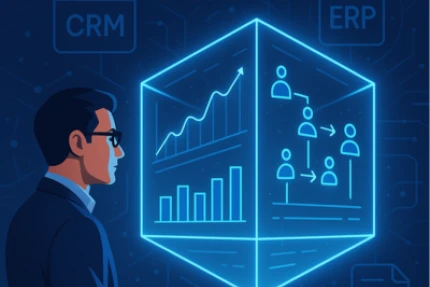
Sustainable growth has become the holy grail for SaaS companies striving to balance profitability and expansion. As the industry navigates the aftermath of a turbulent 2023, marked by a shift toward profitability amidst rising interest rates, understanding the latest SaaS trends and benchmarks is critical to charting a path to success.
SaaS Benchmarks in 2023: Mixed Performance Results
According to the latest SaaS benchmarks from BenchmarkIt, the SaaS industry witnessed a mixed bag of results in 2023. While some key metrics improved, others presented new challenges, reflecting the industry’s ongoing pursuit of efficient growth.
In recent years, as SaaS companies have grappled with slower growth rates in both new logo ARR and expansion ARR, the focus on optimizing go to market expenditure has intensified. One notable trend was the improvement in CAC Payback last year, which dropped from 17 months in 2022 to 15 months in 2023. Additionally, while the median Sales and Marketing expenses as a percentage of revenue held steady at 34% from 2022 to 2023, the range from the 75th percentile to 25th percentile greatly tightened; specifically, the spread reduced from 37 percentage points to 25 percentage points.
On the retention front, Gross Revenue Retention (GRR) is now gaining greater traction over Net Revenue Retention (NRR), as many companies realize the expansions reflected in NRR can mask significant churn. Nevertheless, GRR performance remained steady at 89% in both 2022 and 2023, while Net Revenue Retention (NRR) for private SaaS companies declined from 105% in 2021 to 100% in 2023. Public SaaS companies experienced an even more substantial NRR drop, from 120% in 2022 to 110% in 2023.
Interestingly, 35% of SaaS company growth came from expansion in 2023, up from 33% in 2022, with the top quartile seeing 50% of their growth originating from expansion, albeit at a higher cost of acquisition.
Sustainable Growth Strategies: Leveraging Technology and Data
In 2023 and 2024, many SaaS companies are exploring new ways to optimize their operations and drive sustainable expansion. One key focus is improving sales conversion rates and rep productivity throughout the sales funnel. Leveraging artificial intelligence (AI) for task automation and insight generation can streamline processes and enhance decision-making, creating a more efficient and effective sales engine.
Moreover, the advent of AI has prompted a re-evaluation of roles and hiring needs, potentially leading to significant cost reductions in areas like customer support. By reallocating resources more efficiently, companies can optimize growth while maintaining profitability.
Challenges and the Path Ahead
Despite the promising potential of AI to drive efficient growth, SaaS companies continue to face several challenges. Measuring efficiency and calculating the return on investment (ROI) for specific marketing initiatives remains a hurdle, as does attributing expansions and renewals to specific sales and marketing efforts.
Furthermore, while AI tools are abundant in the sales function, finance functions are still in the early stages of AI adoption. This presents a learning curve for companies seeking to leverage technology effectively, especially for finance teams still grappling with manual spreadsheet work.
As pressure from investors intensifies, the focus on efficient growth is likely to become even more pronounced in quarters to come. Growth continues to hold significant sway over valuations, with revenue growth rate having a 2.3x greater impact on valuations than profitability. For 2023, the “Rule of X”, which emphasizes growth over profitability, is gaining prominence over Rule of 40. The optimal zone is considered to be achieving growth rates above 25% while maintaining a free cash flow margin between 10-20%.
Striking the Right Balance for Sustainable Growth: Embracing Data-Driven Decisions
Data-driven decision-making is key to efficient growth. By leveraging robust benchmarking tools and deep, function specific analytics, SaaS companies can gain valuable insights into their performance, identify areas for improvement, and make informed strategic decisions.
One such tool is Discern’s KPI platform, which provides 200+ SaaS metrics across Sales, Finance, Marketing, Customer Success, and HR. By segmenting performance by any industry, product, or customer profile, SaaS companies can obtain tailored insights and make data-driven decisions to optimize their growth strategies.
Conclusion: Adaptability and Resilience in the SaaS Industry
The SaaS industry’s pursuit of efficient growth strategies is a testament to its resilience and adaptability. While challenges persist, the industry’s embrace of technology, data-driven decision-making, and strategic resource allocation positions it for continued success. As companies refine their strategies and navigate change, the future looks bright for those who can strike the delicate balance between profitability and sustainable growth.
By staying ahead of the latest trends and SaaS benchmarks, leveraging AI and data analytics, and embracing a culture of continuous improvement, SaaS companies can unlock the secret to sustainable growth, propelling them toward long-term success in an ever-changing market. Finance teams can play an instrumental role in pushing their companies to adopt AI for efficient growth.



